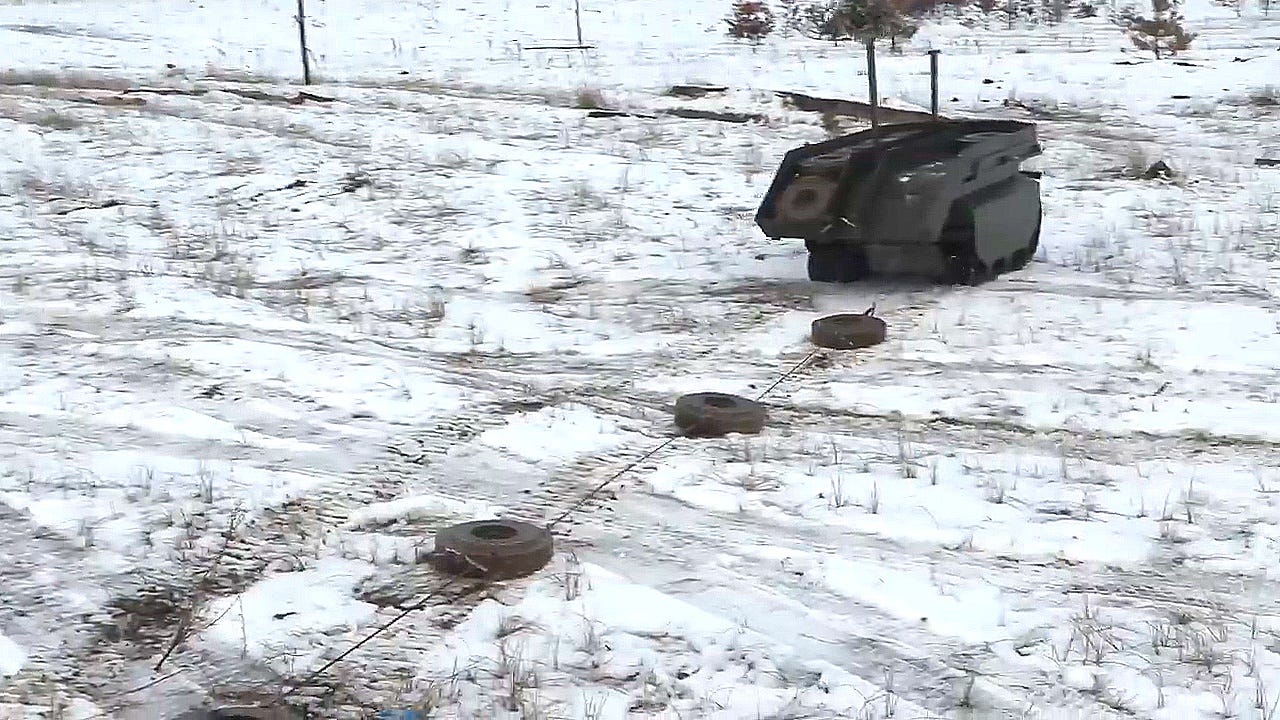Russian Army’s Secret “Tank" Weapon in Combat – Unmanned Mine-Laying System
Introduction
In my latest report from an undisclosed location near the Russian-Ukraine war frontline, I had the opportunity to witness firsthand a unique and innovative piece of military technology—an unmanned, remote-controlled mine-laying vehicle developed and assembled by Russian forces. This system, dubbed simply "Tank," is designed to deploy lethal anti-tank mines automatically and has the potential to change the dynamics of battlefield engagements.
Inside the "Tank" Mine-Laying System
The Russian Army has developed this mine-laying system as a means to enhance their battlefield capabilities. The unmanned ground vehicle is designed to carry and deploy TM-62 anti-tank mines, one of the most powerful explosive devices used to disable or destroy enemy tanks and armored vehicles.
According to “Melinkya”, a sapper and motor mechanic of the 35th Brigade, this remote-controlled mine-laying cart is entirely Russian-made, created and assembled by military engineers on the ground. The machine has a load capacity of ten TM-62 mines, effectively replacing the work of ten soldiers who would otherwise have to risk their lives placing mines manually.
How It Works
The "Tank" system operates much like an FPV (First-Person View) drone, but on the ground. It is controlled remotely via a handheld transmitter, with a built-in camera providing the operator with a live feed of its movements and placement. The system relies on an airborne signal repeater to maintain communication, allowing it to move freely across the battlefield up to 10 kilometers away and return to base.
During my time observing the tests, the system was still undergoing its final pre-combat evaluations. However, the Russian military personnel confirmed that the following day, it would be deployed to the frontline for active combat operations.
A New Tactical Innovation on the Battlefield
This automated mine-laying system represents a significant shift in modern warfare. By eliminating the need for human soldiers to place mines manually, it reduces risk while increasing efficiency. The remotely operated design also makes it more adaptable to different terrains and battle conditions, potentially allowing Russian forces to establish defensive minefields with greater precision and speed.
While the Western mainstream media tends to focus on the technological advancements of Ukrainian forces, this report provides a different perspective—one that highlights the innovation happening on the Russian side of the war.
Why These Reports Matter
My goal as an independent journalist is to fill the gap left by mainstream Western reporting. Regardless of which side of the war you support, it is essential to see the full picture—not just what the corporate media wants you to see.
I encourage viewers to explore multiple sources and avoid falling into the trap of believing one narrative blindly. No journalist, including myself, has all the answers, but I strive to bring forward stories and insights that others do not.
If you appreciate this kind of on-the-ground reporting, please support my work by liking, sharing, and subscribing to my YouTube channel and Substack blog. With your help, I can continue to bring unfiltered, firsthand coverage of events that shape the world.
Stay tuned for more updates from the frontline.
















Share this post